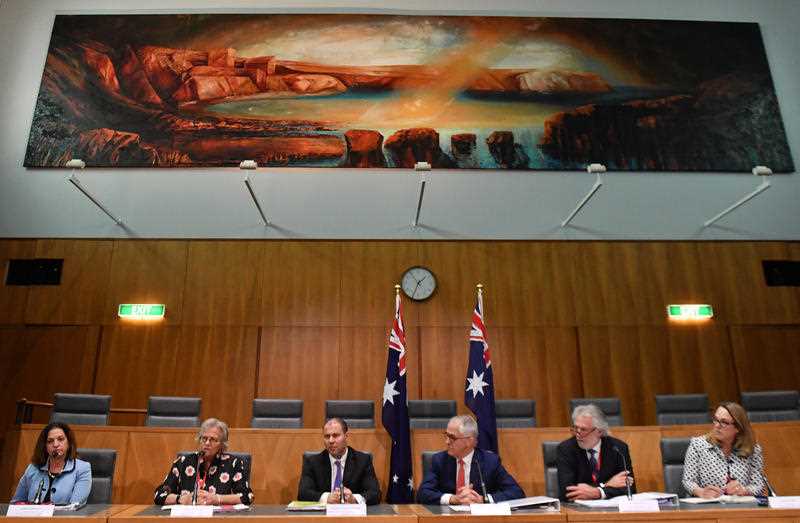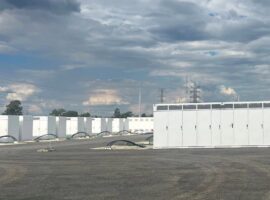When figuring out policy, it’s good to get down to brass tacks.
So for the purpose of trying to understand how the National Energy Guarantee might actually work (or not), let’s explore one of the contract options described in the latest NEG document, that purports to explain how retailers can contract to meet their emission reduction obligations.
Specifically, let’s take the case that a retailer enters into a contract for production from a specified source with known emission intensity.
For argument’s sake, let’s say a contract between AGL and Origin for the sale of the 300MW from unit 1 of Loy Yang A for the 8784 hours in the year 2020.
For argument’s sake, let’s say the emission intensity of this unit is 1.3 tonnes of CO2-equivalent per MWh, and Origin agrees to pay AGL $60/MWh for the electricity produced by unit 1 of Loy Yang A.
Now, of course, Loy Yang A – like other generating units – is very unlikely to be able to produce 300MW for every hour in 2020 as it contracted to. Let’s say it only produced for 85 per cent of those hours: it lost 5 per cent for forced outages, 5 per cent for planned outages and 5 per cent because it offered its production in to the NEM at a price that was higher than the clearing price and so AEMO did not dispatch it.
Now, what happens for the 15 per cent of the time (1137 hours) that Loy Yang A unit 1 did not meet the contractual commitment to sell 300MW to Origin?
In the NEM, Origin will still be supplied by the NEM (the shortfall will come from some other source). But the contract between Origin and AGL will mean that there will be a side payment between and Origin and AGL so that the $60/MWh price is honoured for that shortfall.
So far, so good. But what about the emission intensity of that 15 per cent shortfall? Origin (and AGL) has to know which generating units actually supplied the shortfall when unit 1 did not produce. It could be a bunch of wind farms with zero emissions.
In this case, in recording the emission intensity of the electricity that Origin got from AGL, it would be 85 per cent of Loy Yang A’s emission intensity plus 15 per cent of zero (for the wind).
But if, instead, it was Yallourn that made up the shortfall, then Origin’s emissions position would look much worse (85 per cent of Loy Yang A plus 15 per cent of 1.5 tonnes CO2-e /MWh from Yallourn).
Now Origin has powerful incentives to argue that it was wind farms that made up the shortfall (since this would reduce the emissions counted in their name). But it can not just be left to Origin to say this – all the retailers have an incentive to argue that they got their electricity from the lowest emission source.
Obviously this can not be settled on the basis of some argument: there has to be a verifiable basis of figuring out the emission intensity of the electricity that made up for Loy Yang A’s shortfall.
Now this is the crux of the matter: How can you possibly work out the emission intensity of that shortfall ?
The answer is that some entity (the Australian Energy Regulator, according to the NEG draft) must be in a position to know the emissions of all generators that produced during every five minute trading interval that Loy Yang did not produce (that’s the easy bit).
But the AER must also know all contracts entered into by all generators and all retailers for each five minute interval (so that it can allocate the generation contracted in each 5 minute trading interval to the retailers that contracted for it).
Once the AER has done that accounting, they will be able to figure out which uncontracted generators were effectively selling the electricity that Origin bought when Loy Yang A failed.
Now, in any five minute trading interval you can expect there to be many contracts (probably counted in the thousands) between various generators and various retailers.
This reconciliation will need to be done for every generator and every retailer in every five minute interval so that the AER can reconcile the emission intensity of the electricity sold by every retailer.
The retailers can not do this reconciliation: it has to be a central agency that collects all the dispatch and contract information and continually does this giant reconciliation (and did I mention the complexities presented by distributed generation and inter-regional trade?).
Now while writing this I can sense your hands starting to wave about: but surely the AER can just use some sort of average regional emission intensity?
No, it can’t! If a retailer contracts to buy electricity from a specific generator, the emissions (and production) of that generator has to be accounted for specifically by the parties to that contract, and it has to be netted off to work out the emission intensity of the remaining production in every 5 minute trading interval.
And retailers will have to enter into such bi-lateral contracts if they are to have an aggregate emission intensity that reduces below the average of the market (as it must for emissions to decrease in aggregate across the industry).
And if you think contracts in this new world are sacred to the parties, forget it: all contracts will have to be supplied to the AER. Laywers’ picnic anyone?
Now this is just the easy case of a contract for the purchase of production from a specific generating unit. The picture gets a whole lot more complex to work out the emission intensity to apply to financial contracts when a specific generating unit is not identified.
This is not my nightmare: Luckily I am not in the market. But if I was, I would be getting mighty petrified – after all, the government promises to legislate on this in 12 month’s time.
Like you, I have an irresistible urge to try to explain the world as I find it.
When it comes to the NEG, or much of what passes for electricity regulation and markets in Australia over the last 15 years, it is Walter Scott that so often comes to mind: “Oh what a tangled web we weave, when first we practice to deceive!”
Bruce Mountain is director of CME








